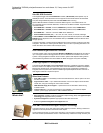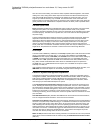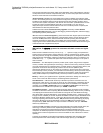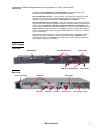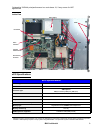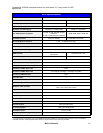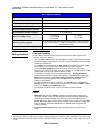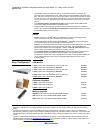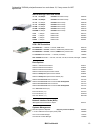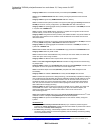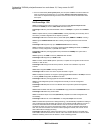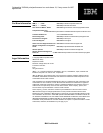
Integrity rx2600: Itanium 2 accesses memory at the FSB speed (400MHz, currently).
e325: Supports 333MHz PC2700 DDR ECC memory with higher performance than PC2100
memory.
Integrity rx2600: Supports only 266MHz PC2100 DDR ECC memory.
e325: The e325 with the Opteron processor can support a peak aggregate memory bandwidth of
10.6GB per second in a 2-way configuration, up to 25% better than that of the Itanium 2.
Integrity rx2600: The peak aggregate memory bandwidth of the Itanium 2 is 8.53GB per second
in a system with a 400MHz FSB.
e325: The e325, with the 64-bit Opteron processor, is capable of running either 32-bit or 64-bit
software natively, or both at once, at high performance.
Integrity rx2600: Using the 64-bit Xeon processor, the rx2600 is limited to only 64-bit software at
high-speed. 32-bit software runs in emulation mode and therefore much slower than the clock
rate would indicate.
e325: The Opteron processor can support a peak aggregate I/O bandwidth of 12.8GB per second
in a 2-way 2.0GHz configuration, 100% better than that of the Itanium 2.
Integrity rx2600: The peak aggregate I/O bandwidth of the Itanium 2 is 6.4GB per second in a
system with a 400MHz FSB.
e325: Models available with either low-cost IDE/ATA or high-performance Ultra320 SCSI drives.
Integrity rx2600: Offers only SCSI models.
e325: The 1U form factor means twice as many servers per rack as the rx2600, and lower data
center floor-space costs in large numbers.
Integrity rx2600: The 2U form factor requires more racks in large quantities.
e325: Includes dual integrated Gigabit Ethernet controllers for high performance without using
any adapter slots.
Integrity rx2600: Includes only one Gb Ethernet controller and one 10/100Mbps controller. Dual
Gb requires an extra-cost option and consumes one of the adapter slots.
e325: The shallower depth of the e325 (66cm/26”) simplifies rack cable management and
serviceability.
Integrity rx2600: The rx2600 at 68.6cm/26.5” is nearly an inch deeper than the e325.
e325: The e325 offers optional ACT cabling technology. This dramatically simplifies the cabling of
rack-mounted servers and eliminates the need for potentially hundreds of KVM cables per rack of
1U servers and associated PDUs and KVM switches. This can save the customer as much as
thousands of dollars per rack over standard KVM cabling, as well as significant administration
time. Also, the interconnection can be done without opening the chassis, and a server can be
taken offline without changing the wiring.
Integrity rx2600: HP offers a solution that requires an adapter in every rx2600, at a higher cost
than the IBM ACT solution. It also requires opening every server to install the adapter, and
rewiring the cabling whenever a server is taken offline—which can be a much more
time-consuming process.
e325: Offers superior integer performance and most of the floating point performance
16
of the
rx2600 at a fraction of the price. Price/performance is tremendously better.
Integrity rx2600: The price is several times higher than for the e325 for similarly configured
systems.
The Bottom Line
1. Sell speed: Faster memory and front-side bus helps your customers power through the
toughest jobs. Integer performance is better than that of the rx2600. FP performance is about
20% lower, but at a much, much lower price.
2. Sell ACT cabling technology: It dramatically simplifies rack KVM cabling and reduces
connectors, thereby helping to increase manageability and serviceability and reducing cabling
cost and administration time.
Outstanding 32/64-bit price/performance in a rack-dense 1U, 2-way server for HPC
applications
IBM Confidential 15.
16
HP DL360 results: http://www.spec.org/cpu2000/results/res2003q3/cpu2000-20030630-02353.html; HP rx2600 results:
http://www.spec.org/cpu2000/results/res2003q3/cpu2000-20030630-02322.html
; IBM ^ 325 results will be available as of
August 11, 2003. Price comparisons using public web prices as of July 28, 2003.



